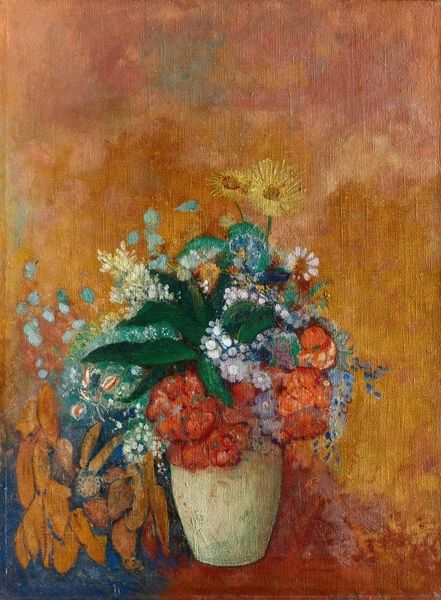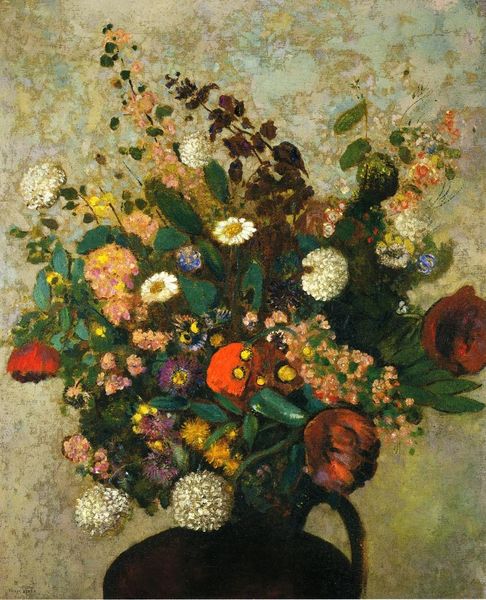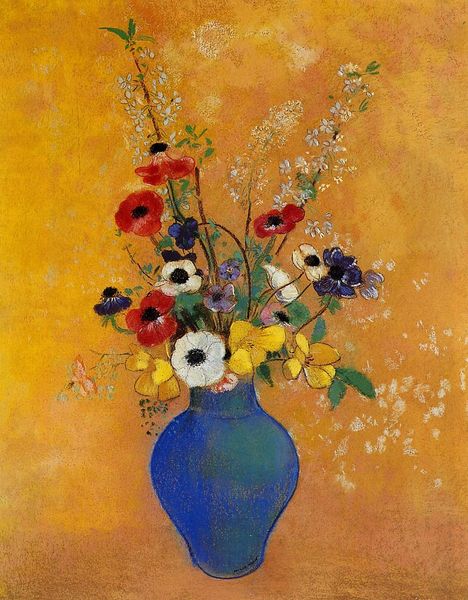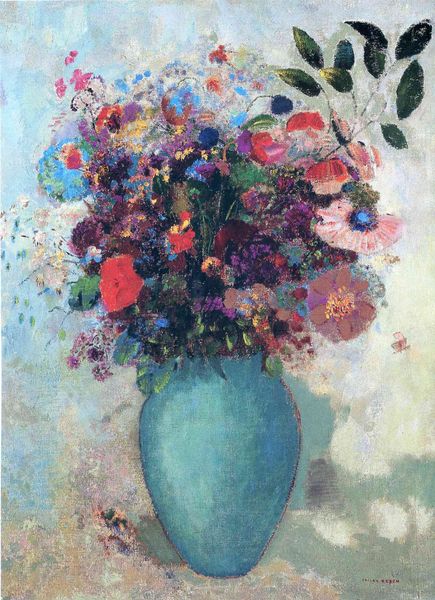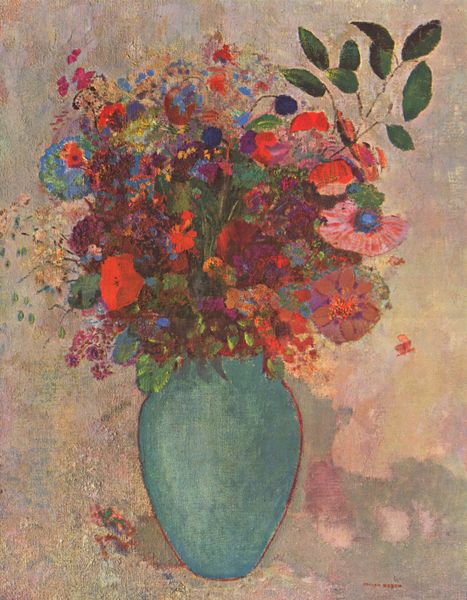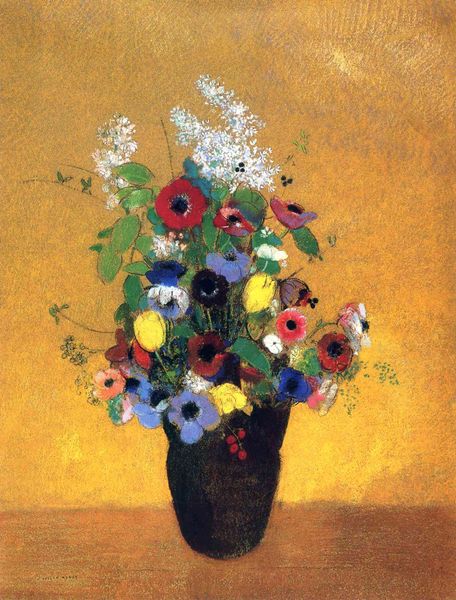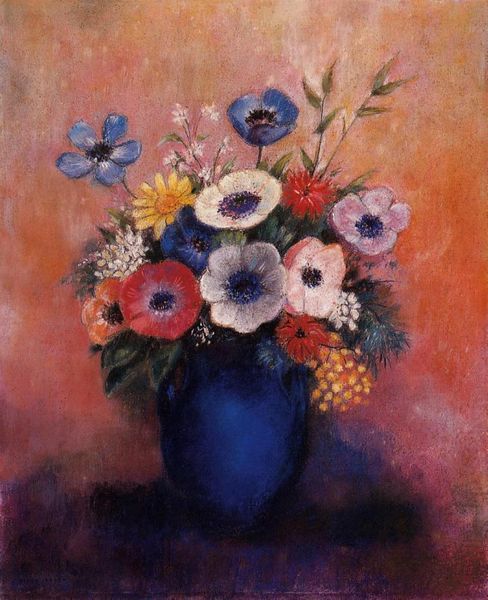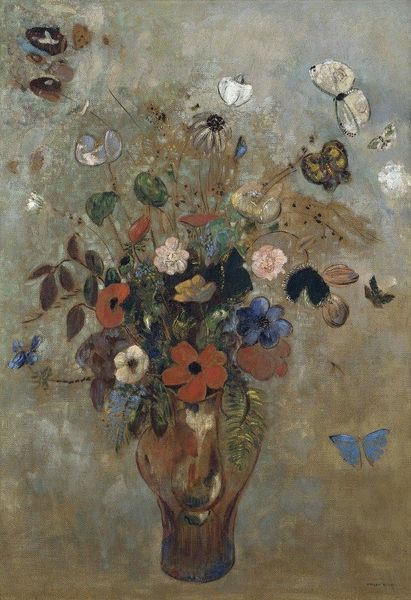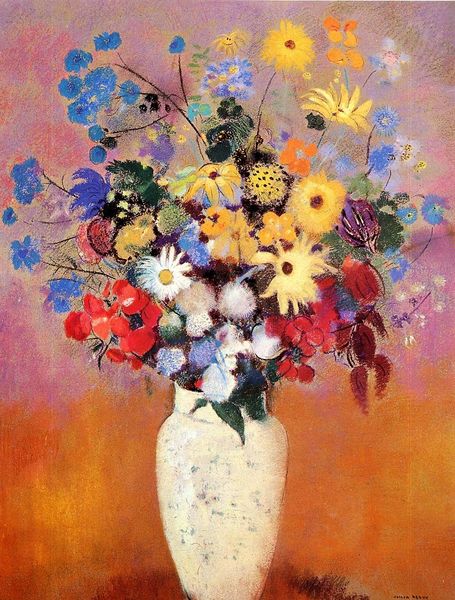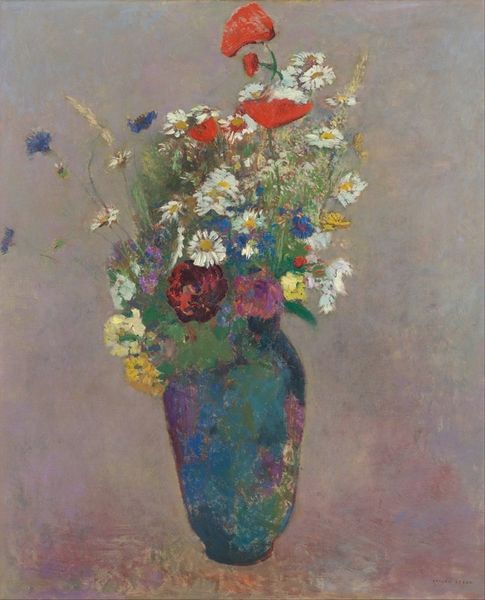
Copyright: Public domain
Editor: So, here we have Odilon Redon's "Flowers," painted in 1905, utilizing oil paint, tempera, and gouache on canvas. The texture seems very thick, almost impasto. It feels quite dreamlike and emotionally charged, although it's ostensibly a still life. What catches your eye about this piece? Curator: I'm struck by how Redon disrupts our expectations of what a still life can be. We have these very traditional elements—flowers in vases—but Redon uses them to express a much more complex sensibility. Consider the institutional role of the still life during this period: often seen as "lesser" than history painting or portraiture. Yet, Redon elevates the genre. Do you see any hints of societal tensions of that time? Editor: I think so! The vibrant colors and the slightly unsettling textures almost seem to reject the rigid, academic style of the past. Maybe he's hinting at societal changes, a move away from tradition. Curator: Precisely. And it is also in line with the avant-garde movements blossoming at the turn of the century. The flower arrangements, instead of appearing conventionally beautiful, take on this almost surreal quality, a sense of mystery and even a little bit of melancholy. Notice how the hazy background seems to push the vases and the flowers forward? Editor: I do, it’s as if they're floating! The vases are more than just vessels; they feel like characters themselves. Curator: In some ways they are! I’m thinking about the institutional narratives, and I believe we’re meant to interpret it with a post-impressionist mindset rather than a traditional one. Redon gives flowers a presence, almost a voice, challenging the power structures dictating what art *should* be, by democratizing its imagery and empowering emotion above representation. Editor: This has totally changed the way I see still-life painting. I’ll never think about flower arrangements the same way. Curator: Indeed. Redon’s Flowers invites us to consider how art, even in its most seemingly simple forms, engages with the politics of representation and the evolving cultural landscape.
Comments
No comments
Be the first to comment and join the conversation on the ultimate creative platform.
